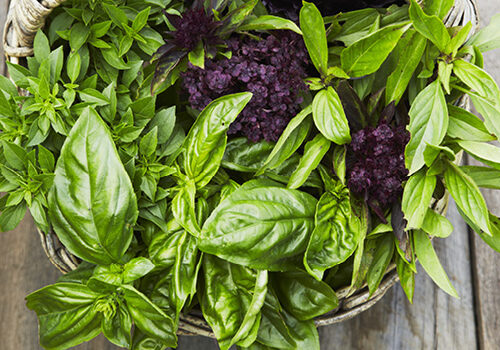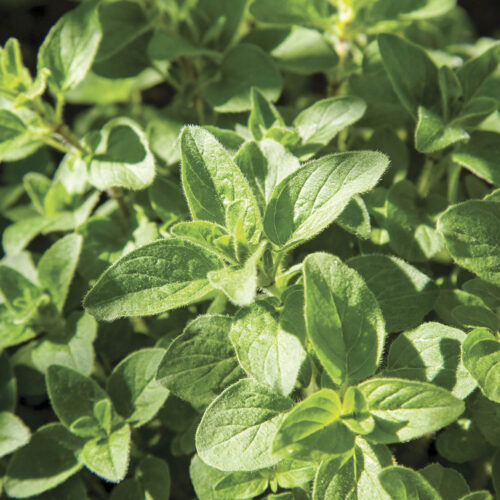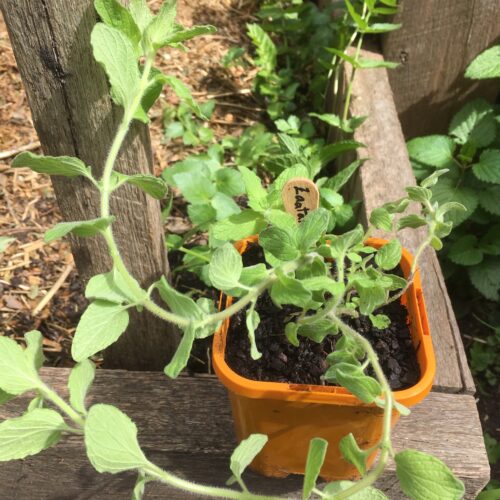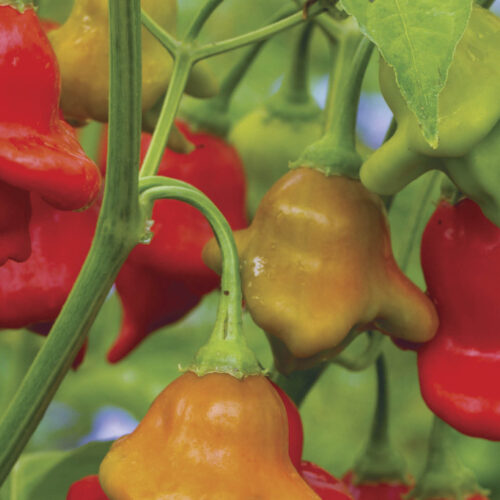On the Spice Trail
2010-11-08T07:04:41+11:00
There’s no need to wait for spices to arrive via ancient trade routes. In the right climate you can grow your own and savour the heady fragrance and flavours of a fresh harvest. NICK ROMANOWSKI whets our appetite.
For 2000 years spices were rare and exotic goods, brought through Asia via dangerous inland routes along with cargoes of silks, aromatics and precious stones, literally from the other side of the world. By the time these spices had reached the eastern Mediterranean port of Antioch in Turkey, and had been carried still further by ship to Europe, they were expensive and prized. Some have fallen from popularity – though the magic of their names remains, from asafoetida to zedoary – while many others are now regarded as culinary essentials.
Age of exploration
For the merchants who controlled the trade routes, spices were a profitable business, but by the end of the 15th century improved navigational abilities and sailing ships had inspired a search for faster sea routes to the sources of these riches. This was the beginning of the age of exploration, with the Portuguese first to round the southern tip of Africa, and claim the orient as their exclusive preserve.
The Spanish hunted for an alternate western route to the legendary Spice Islands and, although the Americas blocked their path, these new lands turned out to be a source of new and unheard of spices and flavourings, including chilli, vanilla and chocolate.
The spices brought back throughout history were probably no worse in quality than the desiccated powders and seeds stacked in rows of identical jars on supermarket shelves, a pale imitation of the complex aromas and richer flavours of freshly harvested plants and seeds. However, many spices are now readily available as living plants or seed, so home gardeners can grow and harvest the real thing these days – freshly grated roots, seeds still fragrant with volatile oils, and leaves which don’t crumble at a touch into a greyish dust.
The potent oils and flavours of most spices are often a deterrent against insects and animals making them pest-free in the right climate. In contrast, humans are perversely attracted to these stimulating flavours and, sometimes, bright colours – for example, the fiery chillies that have evolved to attract birds when the fruit is ripe, and which most other mammals won’t touch.
Peppers
Pepper is still among the most desired of spices, with a spectrum of subtle flavours rather than just the distinctively hot taste that has lent its name to every other “peppery” essence. Although not the most expensive of the spices from the orient, it has always been the one most in demand.
Long pepper (X Piper longum X)
This pepper has the longest history and also the strongest bite. This was the pepper imported from India by the ancient Greeks. The Romans added it to wine or honey, and it was still being widely used in Europe until it fell from favour in the 16th century, when most gourmets with a yearning for a lasting afterburn seem to have transferred their affections to the recently imported chilli. Very difficult to find these days.
Black pepper (X Piper nigrum X)
Black pepper has remained popular even in the face of this New World competitor, perhaps because it isn’t as fiery, so its other flavours aren’t masked by excessive heat. These climbing vines require warm and protected conditions to grow and form their pungent seeds – ideally twining their way upward through trees – and a tropical climate to flower and set fruits. Dried before they are ripe the fruits become black peppercorns; or they can be pickled to make green pepper. Ripe peppercorns with their red skin removed become white pepper when dried. Needs a tropical climate to set seed and takes several years to produce.
Pink peppercorns [coloured mini subhead]
These are much easier to grow, and the adaptable and drought-tolerant peppercorn tree (X Schinus molle X) is naturalised in most country towns in inland Australia, and is even a common street tree in many cities. Preserved by pickling, the rich-pink fruits look hot and taste much like fresh black pepper; some people react adversely to this spice so use it cautiously the first time you try it. Drought, heat and frost-tolerant. A common street tree in southern Australia, easily grown from fresh, red-skinned seed, or as plants from nurseries.
Chillies
Within just a few years of their introduction into Europe from the Americas, chillies (mostly forms of X Capsicum annuum X) seem to have set the world on fire, and rapidly became a major ingredient throughout the Old World. Carried to south-eastern Asia by the Portuguese, they quickly became the hot spice of choice for curries, and anyone who knew nothing of their origins could be pardoned for thinking they have always been a part of Asian cuisine.
The reasons for this wildfire success aren’t hard to understand, as a good crop of chillies can be grown, harvested and dried for long-term storage after just a few months in an ordinary garden bed, unlike pepper vines which take years to establish and crop well.
Despite their popularity in Asian cookery, chillies are still at their most diverse in the Americas, and some relatives of cayenne pepper (X Capsicum frutescens X), such as Habanero, are almost too hot to bear. Others are relatively mild, but prized for particular savours or uses, from the smoky taste of dried and roasted Ancho, to the sharp Tabasco used in sauces, or the thick-fleshed Jalapeno which makes excellent pickles. If you have a taste for the exotic try some of the original Aztec uses, such as adding chilli to chocolate for a potent and stimulating drink.
• Grow as an annual vegetable in southern Australia, or a short-lived perennial in frost-free climates. Wide range available from vegetable seed suppliers, or as potted plants from nurseries.
Gingers
The ginger family includes around 20 species with edible, pungent leaves or fruits, although most are best known for the taste of their thick and fleshy underground rhizomes. Mostly originating in tropical Asia, they prefer warmer climates – although some species can be grown as pot plants in a protected courtyard further south. All gingers should be protected from the hottest sun, preferably by the shade of other plants. This ensures humidity remains moderately high while the roots are maturing.
Ginger
The entire family is named after ginger (X Zingiber officinale X), which has been cultivated for so long that its origins and wild ancestors are lost in the mists of time. The growing plant looks much like a canna lily, but without the showy flowers.
Although ginger is most familiar as knotted hands of rhizomes, the young green shoots can also be peeled and used. These still add the full ginger taste spectrum to salads and cooked foods, but are nowhere near as pungent as the fresh root. Rhizomes suitable for planting are readily available from greengrocers, but choose thick-skinned pieces with paler, swollen, growing tips rather than those that have been partly peeled or are still immature.
Turmeric (X Curcuma longa X)
Turmeric is closely related to ginger, though its stems are shorter and the leaves are broader, and the much smaller rhizomes resemble some kind of orange grub. These are dried and powdered to make the familiar yellow spice, a fairly bland concoction that is valued more as a wholesome food colouring than for its flavour. Living roots (which are often sold in Asian markets) are much more potent and should be used in smaller quantities.
Galangal (X Alpinia galanga X)
Galangal, along with the smaller X A. officinarum X), is the most cold-tolerant of the edible gingers. Potted plants can be grown outdoors even in southern Australia as long as they are moved into more sheltered spots during winter to protect them from frosts and cold, wet soils. The taste of galangal is reminiscent of ginger but more subtle, with a lighter and fruitier aroma, and the shiny, red-skinned roots are now often seen in specialty markets.
Cardamom (X Elettaria cardamomum X)
The name cardamom is also loosely applied to some Aframomum and Amomum species) is also a ginger, but is grown for its fragrant fruits with overtones of eucalyptus. The freshly harvested pods are sweetly pungent, but lose most of their volatile essences quickly once ground or dried. Cardamom plants are almost as cold-tolerant as galangal, but will only flower and set fruit in tropical and subtropical conditions.
• Ginger, turmeric and galangal all need a long, warm growing season to produce well, or can be kept in pots and moved inside before frosts (galangal tolerates light frosts). Available from greengrocers as dormant tubers, and in Asian markets.
• Cardamom is moderately frost-tolerant but only sets pods in warm climates. Widely available as potted plants through nurseries.
Other tropical spices
Tropical spices are diverse in their growing habits, and as they are mostly unrelated to each other it is impossible to make any generalisations about the ways in which they grow, or are harvested and used. Consider the very different examples of cinnamon and vanilla, two of the most popular and familiar sweetening spices, one a small tree and the other a climbing orchid.
Vanilla (X Vanilla planifolia X)
Vanilla is a fleshy-looking vine that may climb 10m through trees, with greenish flowers that are adapted to pollination by hummingbirds in its native Central America. The almost-ripe pods are steamed and sun-cured, then fermented repeatedly in airtight containers to bring out the flavour. Any errors in the processing will result in a poorer quality bean. As vanilla only flowers in moist, tropical conditions and requires specialised knowledge to successfully pollinate and cure, it is the most challenging spice for gardeners, even though plants are readily obtained from many orchid nurseries. Must have tropical conditions and be hand-pollinated to set pods. Available from many specialist orchid nurseries, or easily grown from cuttings.
Cinnamon (X Cinnamomum verum X)
Cinnamon, by contrast, is becoming increasingly available through general nurseries in warmer climates, and can be harvested even from a large potted plant. In ancient times this was the fragrance of divine worship, as well as a sensual luxury, but it is now mostly used as an aromatic, spicy addition to cakes and other confectionery.
Cinnamon sticks are made by cutting the branches off and scraping off the outer bark; the peeled inner bark is removed and allowed to roll up and dry. Commercial growers cut the entire plant down every second year, allowing the young branches to coppice (regrow from the base), but a potted plant will look more ornamental and can be harvested more regularly if only half the branches are removed each year.
• Only thrives in warm to tropical climates. Increasingly available as potted plants from nurseries.
Mustards
Mustard seeds are the basic ingredient of a diverse array of flavourings and smooth pastes. The seeds come from different plants and have different flavours in their own right, although they are all from closely related plants in the cabbage family.
The long pods of black mustard (X Brassica nigra X) split and shed their seeds readily, so it must be harvested early for a reasonable crop. It has been largely replaced by brown or Indian mustard (X Brassica juncea X), with seed pods that remain closed and are more easily harvested by machines. However, this is not a problem for home gardeners who can gather a good crop of either species just by sealing the seed heads in large paper bags until the pods open up.
Black and brown mustard seeds are relatively mild with a spectrum of piquant flavours, while white mustard (X Sinapis alba X) is markedly hotter and more bitter. The only mustard made from this potent species, and which is well regarded in France, is Alsace mustard; all others being lumped together as crude ‘condiments’ rather than gourmet foods in their own right. Don’t let this put you off experimenting with making your own home-made mustards; just use white mustard seeds in small quantities as part of the palette of the many other herbs, spices and vinegars that are used to give taste and texture to the diverse range of mustards.
All mustard plants are short-lived but easy to grow, and will set an impressive crop in almost any soil in a temperate to subtropical climate, without fertilisation or watering. Like most members of the cabbage family they have long-lived seed, and even the seed that comes in spice jars will usually grow well if planted out in spring.
Some forms of brown mustard have been selected for their broad and striking leaves rather than their seed production, and these purple- or red-leafed varieties make a spicy addition to salads as well as giving more zest to soups.
• Short-lived annuals from temperate climates, tolerate some heat as well. Easily grown from seed sown direct in spring. Widely available as packets of spice and from seed companies.
Cumin and other annual spices
Many of the common herbs of cooler climates also produce seeds that are used as spices, including coriander, fennel, dill, caraway, anise, cumin and black cumin. Mediterranean in origin, they have spread into Asia over the centuries, adding to the varied range of spices already grown and used there.
Not all of them are easy to grow; coriander needs cooler conditions or it will run to seed too quickly while still very small, while others are slow and tricky to germinate, although they may crop readily enough once growing.
Cumin (X Cuminum cyminum X) is a good example, with slightly bitter, aromatic seeds that, along with turmeric for colour, are an essential ingredient in curry powders. More than two thousand years ago the Greek philosopher Theophrastus reported that: “When people are sowing it they must curse and slander it if they want it to be healthy and prolific”. Perhaps he’d been planting his in cool, wet conditions which cumin dislikes.
Black cumin (X Nigella sativa X), also called kalonji, is related to the delicate-looking love-in-a-mist widely grown as an ornamental, but produces a larger spicy and fruity seed that was an important seasoning before black pepper was first brought to Europe.
• Cumin and black cumin are temperate to subtropical annuals. Widely available as packets of spice, often slow to germinate but prolific once growing.
Books
• Dangerous Tastes: the story of spices by Andrew Dalby. Original edition 2000 by The British Museum press.
• The Complete Book of Herbs and Spices by Claire Loewenfeld and Phillipa Black, original edition 1974 but reprinted and revised a number of times since.
• Encyclopedia of Herbs and Their Uses by Deni Bown. Original edition 1995 by Dorling Kindersley.
The leaves of brown mustard make a tangy addition to soups and salads.





